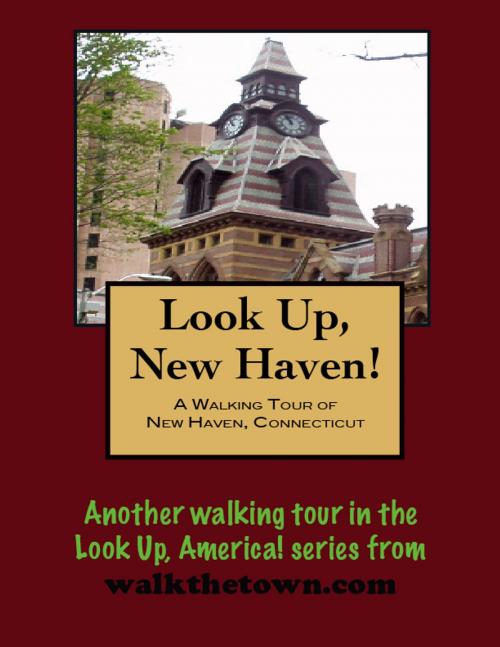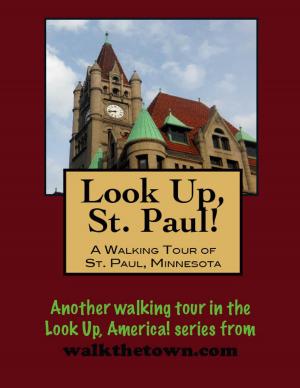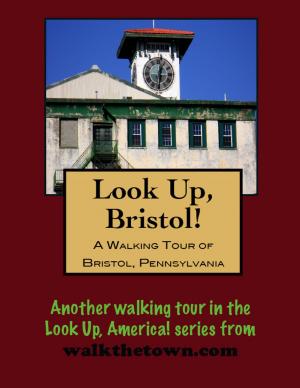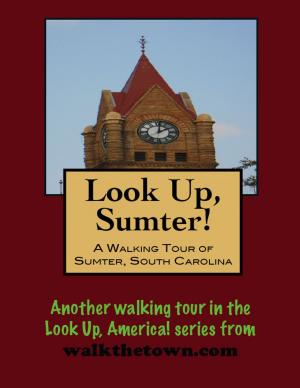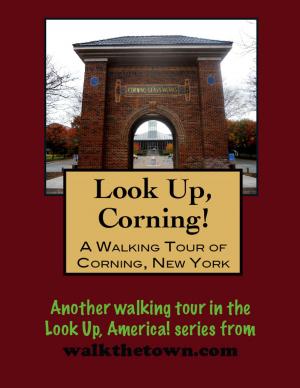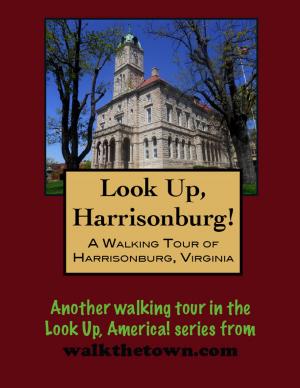| Author: | Doug Gelbert | ISBN: | 9781458034878 |
| Publisher: | Doug Gelbert | Publication: | March 2, 2011 |
| Imprint: | Smashwords Edition | Language: | English |
| Author: | Doug Gelbert |
| ISBN: | 9781458034878 |
| Publisher: | Doug Gelbert |
| Publication: | March 2, 2011 |
| Imprint: | Smashwords Edition |
| Language: | English |
There is no better way to see America than on foot. And there is no better way to appreciate what you are looking at than with a walking tour. This walking tour of New Haven, Connecticut is ready to explore when you are. Each walking tour describes historical, architectural landmarks, cultural sites and ecclesiastic touchstones and provides step-by-step directions.
Every tour also includes a quick primer on identifying architectural styles seen on American streets.
The area which today is New Haven was the home of a small tribe of Native Americans, the Quinnipiack, who built their villages around a broad, but very shallow harbor, at the confluence of the Quinnipiac, Mill and West rivers. They harvested seafood, hunted with bow and arrow for food and furs and grew maize, the staple of their diet.
Their lives changed forever on April 24, 1638, when a company of five-hundred English Puritans led by the Reverend John Davenport and Theophilus Eaton, a wealthy London merchant, sailed into the harbor. The newcomers were looking for a place to practice their religious beliefs but also came with an avaricious eye towards controlling the trade from the Long Island Sound down to the Virginia colony. Within a year the settlers had laid out eight streets in a grid of four streets by four streets creating what is now commonly known as the “Nine Square Plan,” making New Haven one of the first planned towns in the New World.
Plans for a commercial empire were scuttled early on, however, when the town sent its first fully loaded ship of local goods back to England in 1646. The ship never reached Europe and disappeared with all the hopes of its financial backers in Quinnipiac, as the town was know. By the time it became New Haven in 1678, the colony lagged far behind Boston and the newly conquered town of New Amsterdam, renamed New York.
Instead, New Haven evolved into more of a cultural and educational center. It was made co-capital of Connecticut in 1701, a status it maintained with Hartford all the way into the 1870s. In 1716 the tiny Collegiate School of Connecticut arrived in town from Old Saybrook. Two years later, in response to a request from Cotton Mather on behalf of the institution, Welsh merchant Elihu Yale sent a carton of goods which the school sold for 800 pounds sterling and so it became Yale College. Today Yale University is synonymous with New Haven and is the city’s largest employer.
There was industry as well. Locks and hardware, pork products, clocks, and especially, Winchester repeating rifles bore New Haven trademarks. Among the odds and ends invented in New Haven were the corkscrew, the lollipop and the steel fishhook. But smokestacks and factories were never an image evoked by New Haven. The city had the first public tree planting program in America, producing a canopy of mature trees that gave New Haven the nickname “The Elm City.”
New Haven has been in the forefront of urban renewal in recent decades and lost many of its historic buildings and Dutch Elm disease claimed the lives of many of its big shade trees. But trees have been replanted, millions of dollars spent to spruce up buildings that weren’t knocked down and out walking tour will begin in the center of the 16-acre New Haven Green, a National Historic Landmark, and the outstanding feature of downtown...
There is no better way to see America than on foot. And there is no better way to appreciate what you are looking at than with a walking tour. This walking tour of New Haven, Connecticut is ready to explore when you are. Each walking tour describes historical, architectural landmarks, cultural sites and ecclesiastic touchstones and provides step-by-step directions.
Every tour also includes a quick primer on identifying architectural styles seen on American streets.
The area which today is New Haven was the home of a small tribe of Native Americans, the Quinnipiack, who built their villages around a broad, but very shallow harbor, at the confluence of the Quinnipiac, Mill and West rivers. They harvested seafood, hunted with bow and arrow for food and furs and grew maize, the staple of their diet.
Their lives changed forever on April 24, 1638, when a company of five-hundred English Puritans led by the Reverend John Davenport and Theophilus Eaton, a wealthy London merchant, sailed into the harbor. The newcomers were looking for a place to practice their religious beliefs but also came with an avaricious eye towards controlling the trade from the Long Island Sound down to the Virginia colony. Within a year the settlers had laid out eight streets in a grid of four streets by four streets creating what is now commonly known as the “Nine Square Plan,” making New Haven one of the first planned towns in the New World.
Plans for a commercial empire were scuttled early on, however, when the town sent its first fully loaded ship of local goods back to England in 1646. The ship never reached Europe and disappeared with all the hopes of its financial backers in Quinnipiac, as the town was know. By the time it became New Haven in 1678, the colony lagged far behind Boston and the newly conquered town of New Amsterdam, renamed New York.
Instead, New Haven evolved into more of a cultural and educational center. It was made co-capital of Connecticut in 1701, a status it maintained with Hartford all the way into the 1870s. In 1716 the tiny Collegiate School of Connecticut arrived in town from Old Saybrook. Two years later, in response to a request from Cotton Mather on behalf of the institution, Welsh merchant Elihu Yale sent a carton of goods which the school sold for 800 pounds sterling and so it became Yale College. Today Yale University is synonymous with New Haven and is the city’s largest employer.
There was industry as well. Locks and hardware, pork products, clocks, and especially, Winchester repeating rifles bore New Haven trademarks. Among the odds and ends invented in New Haven were the corkscrew, the lollipop and the steel fishhook. But smokestacks and factories were never an image evoked by New Haven. The city had the first public tree planting program in America, producing a canopy of mature trees that gave New Haven the nickname “The Elm City.”
New Haven has been in the forefront of urban renewal in recent decades and lost many of its historic buildings and Dutch Elm disease claimed the lives of many of its big shade trees. But trees have been replanted, millions of dollars spent to spruce up buildings that weren’t knocked down and out walking tour will begin in the center of the 16-acre New Haven Green, a National Historic Landmark, and the outstanding feature of downtown...
